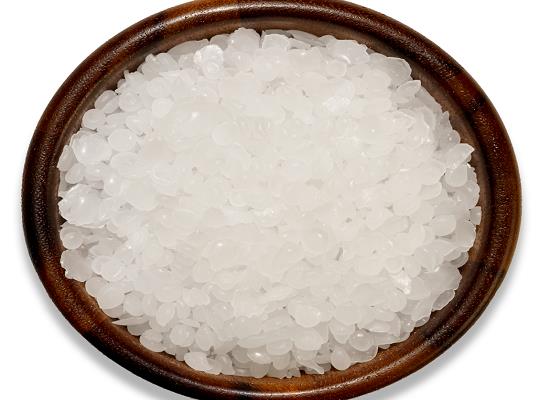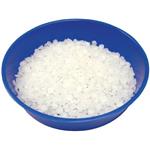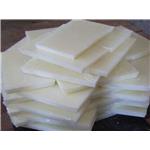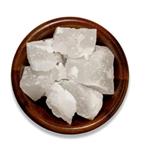Paraffin Wax: Crystalline Behavior and Applications in Heat Storage
Jul 11,2024
General Description
Paraffin wax's crystalline behavior is crucial yet challenging, affecting oil pipelines and heat storage systems. Understanding its n-alkane molecule alignment and the impact of additives like branched alkanes on crystallization is key. Simulation models provide insights into managing paraffin deposition in pipelines, vital for industry efficiency. In heat storage systems, paraffin wax's properties like self-sealing ability and phase change capabilities revolutionize efficiency, increasing energy storage capacity and system reliability. Utilizing paraffin wax not only improves sealing and insulation but also enhances energy efficiency, making it a versatile and essential element in advancing seasonal heat storage technologies.

Figure 1. Paraffin Wax
Crystalline Behavior
Paraffin Wax Crystallization
Paraffin wax is a common material used in various industries, notably in offshore oil production, where it presents challenges due to its tendency to solidify in pipelines under low temperatures. This solidification is primarily due to the crystallization of n-alkanes, which are major constituents of paraffin wax. Understanding the crystalline behavior of paraffin wax is crucial for mitigating its adverse effects on oil transportation and processing efficiency.
Mechanism of Crystallization in Paraffin Wax
The crystallization process in paraffin wax involves the alignment and solidification of n-alkane molecules under specific conditions. Research has shown that the middle carbon atoms in n-alkanes contribute significantly to crystallization due to their ability to fit neatly into a crystal lattice, promoting the orderly structure that characterizes crystalline solids. In contrast, the end atoms of these molecules are less favorable for crystallization because their positioning disrupts the regularity of the crystal structure. To manage and potentially reduce the crystallization of paraffin wax, additives such as branched alkanes can be introduced. These branched molecules interfere with the regular alignment of n-alkanes, thereby inhibiting crystallization. Interestingly, a small amount of branched alkanes might enhance crystallization initially by fitting into spaces within the crystal lattice without major disruption. However, as the proportion of branched alkanes increases, their inhibitory effect becomes more pronounced, disrupting the crystalline structure effectively.
Recent studies have utilized simulation models to observe these effects in detail, providing valuable insights into how different molecular structures influence the crystallization behavior of paraffin wax. These findings are instrumental in developing strategies to control paraffin deposition, which is vital for maintaining the operational efficiency of oil pipelines and minimizing economic losses in the oil industry. 1
Applications in Heat Storage
Paraffin Wax in Seasonal Heat Storage Systems
Paraffin wax plays a crucial role in the innovation of seasonal heat storage systems, a technology essential for progressing towards a low-emission economy. Integrated into district heating networks, these systems enhance the utilization of renewable energy sources such as solar and wind power, helping to manage their intermittent nature. However, the effectiveness of these systems is often hindered by technical challenges, notably in sealing and heat retention. Paraffin wax, with its unique properties, offers a promising solution to these issues, potentially revolutionizing the effectiveness of seasonal heat storage.
Applications and Benefits of Paraffin Wax in Heat Storage
In recent studies, paraffin wax has been tested as a self-sealing insulation material within the marginal areas of heat storage systems. Due to its hydrophobic nature and ability to transition between solid and liquid states, paraffin wax can effectively seal leaks that occur within storage containers. This capability not only prevents system breakdowns caused by minor leakages but also enhances the overall reliability of the storage units. Furthermore, the latent heat properties of paraffin wax significantly augment the thermal storage capacity. By absorbing and releasing heat during its phase change from solid to liquid and vice versa, paraffin wax minimizes lateral heat losses and improves energy efficiency.
The thermal conductivity of paraffin wax is relatively low, which further aids in reducing unwanted heat dispersion, thus maintaining the desired temperature within the storage system for longer periods. Laboratory experiments have shown that using paraffin wax can increase the energy storage capacity by significant margins, with potential increases in system efficiency of up to 40%. These findings underscore the versatility of paraffin wax not only as an insulator but also as a vital component in enhancing the operational efficiency and market viability of seasonal heat storage technologies. 2
Reference
1. Wang J, Hao Y, Zhu B, Han T, Li Z, Zhang J. Crystalline Behavior of Paraffin Wax. J Phys Chem B. 2022; 126(4): 985-995.
2. Bott C, Dressel I, Bayer P. Paraffin wax as self-sealing insulation material of seasonal sensible heat storage systems-A laboratory study. PLoS One. 2020; 15(7): e0236056.
- Related articles
- Related Qustion
- Pharmacology of Paraffin wax Mar 2, 2022
Paraffin wax is a solid crystalline mixture mainly composed of straight-chain (normal) alkanes CnH2n+2(simplified as Cn) (90?95% w/w),1which is derived from fossil fuels, such as petroleum, coal, or o
- What can Paraffin wax be used for in the industry? Sep 10, 2021
Paraffin is a mixture of hydrocarbons extracted from some distillate of petroleum, shale oil or other asphaltic mineral oil. It is mainly composed of solid paraffins, odorless and tasteless, white or pale yellow translucent solids.
- Toxcity of Paraffin wax Aug 5, 2021
Paraffin wax is usually non-toxic, it is mainly composed of carbon and hydrogen.
Recent research enhances 1,3-Propanediol yield via enzyme modulation, focusing on L-Aspartate Decarboxylase and 3-HP Aldolase, and optimizing RBS for efficient biosynthesis in engineered microbes.....
Jul 11,2024APITetrasodium pyrophosphate boosts iron absorption and enhances protein stability, highlighting its value in fortification and preservation in food industry applications.....
Jul 11,2024APIParaffin wax
8002-74-2You may like
- PARAFFIN WAX
-

- $80.00 / 50kg
- 2024-07-11
- CAS:8002-74-2
- Min. Order: 100kg
- Purity: 98%
- Supply Ability: 10 tons
- Paraffin wax
-

- $6.00 / 1KG
- 2024-07-10
- CAS:8002-74-2
- Min. Order: 1KG
- Purity: 99%
- Supply Ability: 20TONS
- Candle Wax
-

- $980.00 / 1T
- 2024-05-06
- CAS:8002-74-2
- Min. Order: 1T
- Purity: 98%
- Supply Ability: 20T




